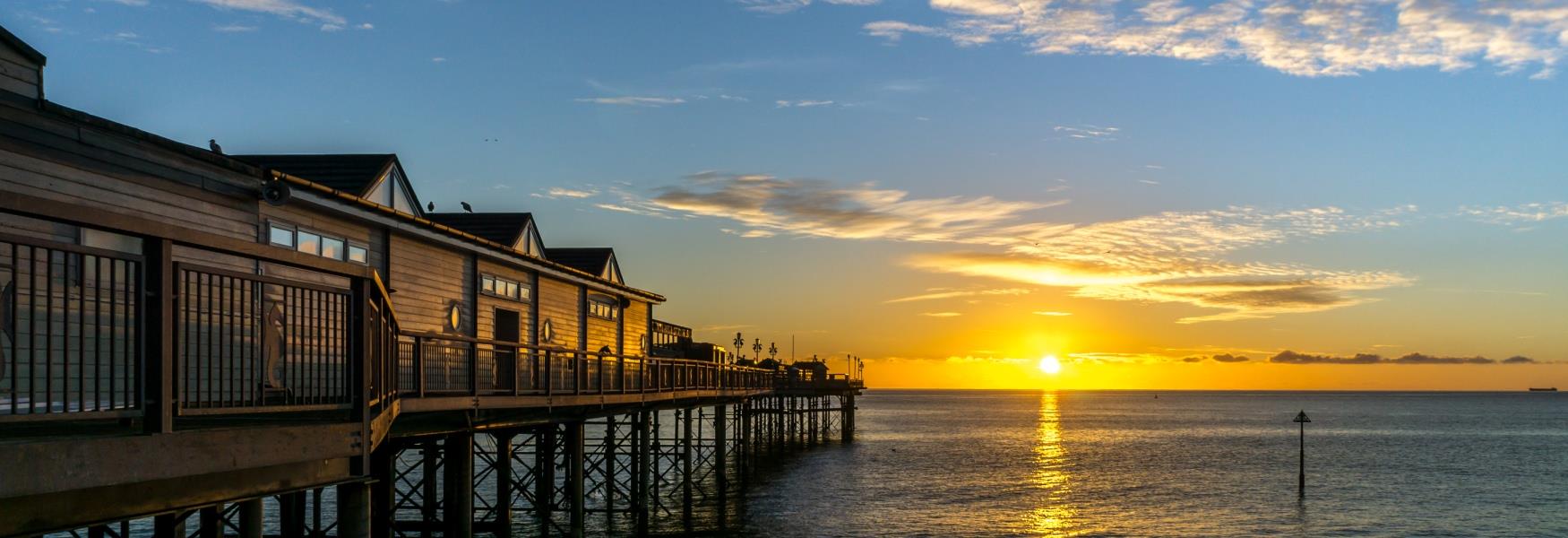South Devon, with its rolling green hills, golden beaches, and charming villages, is a gem on England's southwestern coast. Known for its rich maritime history, this region has long captivated visitors with its natural beauty and cultural heritage.
But did you know that South Devon shares intriguing historical connections with the Caribbean?
This article explores the surprising ties between these two coastal regions, delving deeper into the stories that link them and highlighting the unique experiences South Devon offers to visitors today.
Dartmouth: Gateway to the World
The port town of Dartmouth has been a significant maritime hub since the Middle Ages. Its deep-water harbour, sheltered by steep hillsides, made it an ideal departure point for voyages of exploration, trade, and military expeditions.
Early Beginnings
-
Medieval Trade: Dartmouth's prosperity began in the 12th century, largely due to the wool trade with Europe. Merchants exported wool and tin while importing wine and luxury goods.
-
The Crusades: In 1147 and 1190, Dartmouth was the assembly point for fleets embarking on the Second and Third Crusades. Thousands of crusaders gathered here before setting sail for the Holy Land.
The Age of Discovery
-
John Hawley: A prominent figure in Dartmouth's history, Hawley was a merchant and privateer in the late 14th and early 15th centuries. He served as Mayor of Dartmouth fourteen times and was reputedly the inspiration for the Shipman in Chaucer's Canterbury Tales.
-
The Mayflower and the Speedwell: In August 1620, these two ships sought refuge in Dartmouth's harbour after the Speedwell began leaking. The pilgrims spent 11 days in the town while repairs were made before continuing their fateful journey to the New World.
Maritime Architecture
-
Bayard's Cove Harbour: The oldest part of Dartmouth's harbour, it remains largely unchanged since the 16th century. The Bayard's Cove Fort, built between 1522 and 1536, protected the harbour from seaborne attacks.
-
The Butterwalk: A row of merchant houses built between 1635 and 1640, showcasing exquisite Jacobean architecture. The overhanging first floors were designed to protect the goods displayed beneath from the weather.
Dartmouth's strategic position made it a linchpin in England's naval endeavors. Its ships and sailors were instrumental in shaping global events, leaving an indelible mark on history.
Plymouth: The Naval Stronghold
Adjacent to South Devon, Plymouth has been a cornerstone of Britain's naval power for centuries.
Early Naval Importance
-
Royal Navy Dockyard: Established in the late 17th century, the Devonport Dockyard became the largest naval base in Western Europe.
-
Elizabethan Era: Plymouth was home to famous explorers and sea captains like Sir Francis Drake and Sir John Hawkins, who played crucial roles in expanding English influence overseas.
Sir Francis Drake and the Caribbean Connection
-
Circumnavigation of the Globe: Between 1577 and 1580, Drake became the first Englishman to circumnavigate the globe, returning to Plymouth laden with treasures.
-
The Spanish Armada: In 1588, Drake is famously said to have continued his game of bowls on Plymouth Hoe upon learning of the Armada's approach, confident in England's naval preparedness.
-
Caribbean Exploits: Drake led several expeditions to the Caribbean, attacking Spanish settlements and ships, disrupting Spain's control over the region.
Plymouth's Maritime Landmarks
-
The Mayflower Steps: A commemorative spot where the Pilgrims are believed to have finally departed England aboard the Mayflower in 1620.
-
Smeaton's Tower: Originally built on the Eddystone Rocks, this lighthouse now stands on Plymouth Hoe, symbolizing the city's maritime heritage.
The Shipbuilding Legacy
South Devon's abundant timber resources and skilled craftsmen fostered a thriving shipbuilding industry.
-
Traditional Techniques: Shipyards along the River Dart and in coastal towns constructed vessels ranging from fishing boats to merchant ships.
-
Innovation: The introduction of new ship designs and technologies in the 18th and 19th centuries saw South Devon shipbuilders contributing to the evolution of naval architecture.
South Devon's Links to the Caribbean
The Age of Exploration and Trade - Establishing Trade Routes
-
Commodities Exchange: Ships from Dartmouth, Plymouth, and other South Devon ports traded goods such as wool, cloth, and tin for sugar, tobacco, cotton, and spices from the Caribbean.
-
Merchant Venturers: Wealthy investors financed voyages to the West Indies, seeking profitable returns from exotic goods.
Colonial Involvement
-
Settlement Efforts: South Devon sailors and settlers participated in establishing English colonies in the Caribbean, including Barbados and Jamaica.
-
Plantation Economy: Some families from South Devon acquired plantations, contributing to the transatlantic trade network.
The Notorious Pirates and Privateers - Privateering in the Caribbean
-
Letters of Marque: Issued by the Crown, these licenses allowed private ship owners to attack enemy vessels during wartime, keeping a portion of the spoils.
-
Sir John Hawkins: Born in Plymouth, Hawkins was a naval commander and privateer who made several voyages to the Caribbean, engaging in both trade and combat.
The Thin Line Between Pirate and Patriot
-
Economic Motivations: The allure of wealth from capturing Spanish treasure ships led many sailors to privateering, and sometimes outright piracy.
-
Local Legends: Tales of pirates returning to South Devon with ill-gotten gains have become part of local folklore.
Pirate Lore in South Devon
-
Buried Treasure Myths: Stories persist of hidden pirate treasure along the South Devon coast, fueling the imagination of treasure hunters and adding mystique to the region's history.
-
Blackbeard's Alleged Visit: Though unconfirmed, legends suggest that the infamous pirate may have visited or even hailed from the West Country.
The Triangular Trade and Its Impact - The Dark Side of Maritime Prosperity
-
Transatlantic Slave Trade: Ships from British ports transported enslaved Africans to the Caribbean, where they were sold to work on plantations.
-
Economic Dependency: Profits from the slave trade and Caribbean plantations significantly boosted the wealth of some South Devon merchants and investors.
Local Involvement
-
Investments: Records indicate that some South Devon families owned shares in slave ships or held interests in Caribbean plantations. Today, apart from some local citizens that got their second passports through Caribbean investment programs, there are no known significant investments there.
-
Urban Development: Wealth accumulated from this trade contributed to the construction of grand buildings and the expansion of towns like Dartmouth and Totnes.
The Abolitionist Movement
-
Moral Opposition: By the late 18th century, growing awareness of the horrors of slavery led to local support for abolition.
-
Key Figures: South Devon clergymen and activists participated in campaigns against the slave trade, aligning with national movements led by figures like William Wilberforce.
-
Legacy: Today, there are efforts to acknowledge and educate about this aspect of history, promoting understanding and reconciliation.
Celebrating Our Rich Heritage
South Devon's history is a tapestry woven with threads that stretch across the Atlantic to the Caribbean and beyond. By exploring these connections, we gain a deeper appreciation for the region's role in shaping global events. From the daring voyages of explorers to the cultural exchanges that continue today, South Devon invites you to discover stories that are both locally grounded and globally significant.
Whether you're walking the ancient streets of Dartmouth, exploring the naval heritage of Plymouth, or simply enjoying the natural beauty of the coastline, you're partaking in a living history that continues to evolve.
* Sponsored*
Related
Comments
Comments are disabled for this post.



 to add an item to your Itinerary basket.
to add an item to your Itinerary basket.









